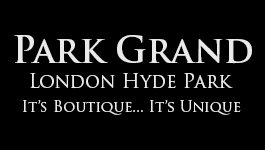London is home to countless bridges, but none as famous as Tower Bridge which connects the southern district of Bermondsey to the Tower of London. This beautiful bridge dates back to the Victorian era and has a fascinating history which draws guests of Hyde Park accommodation and other tourists every day.
With more than 500 thousand visitors to Tower Bridge each year, it’s unsurprising that a large exhibition has grown and continues to do so on the upper levels of this stunning landmark. Tower Bridge and its galleries have much to offer guests of Hyde Park hotels and provide a glimpse into the infrastructural history of London.
From the history of the bridge to what you can expect from its exhibition, this blog will outline what guests of 4-star hotels near Paddington London can see and do at Tower Bridge and its surrounding area.
What Is Tower Bridge?
Tower Bridge finished construction in 1894 and is a suspension or bascule bridge that consists of two 65-metre towers, connected by a walkway as well as a street-level road and footpath. The bridge has the capacity to rise and allow boat traffic to travel through its central thoroughfare.
Why Is It So Important?
As the area of East London started to develop more vital industries, it was decided that a bridge would be needed to channel traffic from the centre of the city to the east. This led to a competition for bridge designs that finally settled on the suspension bridge, which doubled up as a way to transport goods to the port of St Katharine’s Dock which at the time was a booming source of commerce. Alongside its practical uses, Tower Bridge’s design has become synonymous with London as a whole. Millions of people across the world who have never visited London will still know that Tower Bridge is an iconic landmark within the city.
The Design Of Tower Bridge
The design of Tower Bridge was finalised in the 1870s and consisted of two counterbalanced bascules that weighed around a thousand tons each. These counterweights allow Tower Bridge’s drawbridge element to rise in less than 5 minutes. At a height of 65 metres, the bridge has a walkway atop it that is connected between two parallel spires. Once upon a time, you could only reach this top walkway by stairs but since the 20th century, a lift has been installed and the stairs were gotten rid of. Tower Bridge is made from 70,000 long tons of concrete, which were sunk into the Thames riverbed, whilst the structure itself was built from steel covered in Cornish granite and Portland stone.
With a Gothic Revival design that’s synonymous with many of London’s most well-known landmarks, Tower Bridge, complete with its beautiful blue and white finish, is now one of the most stunning architectural feats in modern London.
History Of Tower Bridge
Though guests of hotels with bars near Hyde Park will learn a lot about the history of the bridge from a visit to its galleries, we thought we’d provide a brief overview here of how the bridge came to be.
The decision for bridges to be pitched for the Tower Hill location was overseen by an architectural committee, who eventually settled on a design by Sir Horace Jones - who was one of the judges - and John Wolfe Barry, an esteemed London engineer. The bridge’s construction took 8 years and was funded by the Bridge House Estate, which was founded in the 13th century to help maintain London Bridge. Over those 8 years, more than 400 men worked on the construction of the bridge.
Tower Bridge Exhibition
If you get a chance to visit the bridge for more than just a commute, then the Tower Bridge exhibition is well worth your time. It’ll take you only an hour or so to cover and costs £11.40 for adults whilst children over the age of 5 and under 15 can visit for £5.70. Tours of the bridge start at £20 per head for adults. The exhibition explores archival footage and artefacts from the construction of the bridge and provides galleries within its engine rooms and walkways.
Glass Floor
33 and a half metres above the road below, the glass floor walkway that connects the two towers on Tower Bridge is one of the most popular aspects of the tour. With the panoramic view over the bridge and its surrounding area, this is one that you’ll definitely want your camera for. Installed in 1984, the glass floor once again made use of the upper walkway that had for decades before been closed due to the amount of crime that festered on these unseen, stair-accessible only upper floors. Make sure to utilise the mirrored ceiling, which makes taking photos even easier!
Engine Rooms
Though unused today, the engine rooms on Tower Bridge are still popular parts of the exhibition. The engine rooms were once used to control the hydraulics of the drawbridge but were replaced by oil engines situated elsewhere in the structure. The Victorian designs are still there for all to see though, complete with coal boilers, accumulators and drivetrains.
Galleries
The galleries on Tower Bridge chart the history and development of the bridge over the years. There are plenty of child-friendly aspects to the exhibition, and the interactive multimedia within the galleries provide state-of-the-art and in-depth glimpses into the bridge’s past.
Getting To Tower Bridge
Tower Bridge is easy to reach from several tube stations as well as the nearby Tower Bridge Quay by boat, and of course by road for those crossing in a vehicle. There are cycle paths on the bridge too, meaning that you can enjoy the sights and sounds on a Santander Cycle, rentable from many docking stations near the bridge. The easiest tube stations for access to Tower bridge are Tower Hil on the Circle and District Lines and London Bridge, about a 20-minute walk away on the Northern and Jubilee Lines. The closest stations for railways are Fenchurch Street and London Bridge, whilst the DLR Line runs through the nearby Tower Gateway.
Share the post "Everything You Need To Know About Tower Bridge"





















